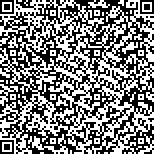| 本文已被:浏览 436次 下载 462次 |

码上扫一扫! |
|
|
| 羟基红花黄色素A抗缺氧/复氧所致神经元损伤的作用及机制研究 |
|
贾晓旭1,2, 张怡博2,3, 袁庆2,3, 王硕2, 朱金墙2,3
|
|
1.鄂尔多斯中医医院药剂科, 鄂尔多斯 017010;2.天津中医药大学, 天津 301617;3.天津中医药大学中医药研究院, 组分中药国家重点实验室, 天津 301617
|
|
| 摘要: |
| [目的] 考察羟基红花黄色素A(HSYA)抗缺氧/复氧(H/R)损伤神经元的作用及机制。[方法] 原代培养Wistar大鼠胎鼠皮层神经元,将神经元随机分为正常对照组、H/R组、羟基红花黄色素A低(5 μg/mL)、中(20 μg/mL)、高(80 μg/mL)剂量组,考察HSYA对神经元活力和乳酸脱氢酶(LDH)释放的影响;采用逆转录-聚合酶链式反应(RT-PCR)和酶联免疫吸附实验(ELISA)分别检测脑源性神经生长因子(BDNF)、生长相关蛋白43(GAP-43)及Nogo-A等与神经元突触重塑相关指标的mRNA和蛋白表达。[结果] 与正常对照组比较,H/R组细胞活力明显降低,LDH释放明显增加(P<0.01),BDNF及GAP-43 mRNA和蛋白表达均显著降低(P<0.05),Nogo-A mRNA和蛋白表达显著增加(P<0.01);与H/R组比较,HSYA低、中、高3个剂量组细胞活力均显著增强,LDH释放明显减少(P<0.01),BDNF及GAP-43 mRNA及蛋白表达明显增加,Nogo-A mRNA和蛋白表达显著降低(P<0.05或P<0.01)。[结论] HSYA能够提高神经元活力,减少LDH释放,具有抗H/R所致神经元损伤的作用,该作用与促进BDNF表达有关;此外,HSYA还能促进GAP-43 mRNA和蛋白表达、抑制Nogo-A mRNA和蛋白表达,从而增加神经元突触可塑性。 |
| 关键词: 羟基红花黄色素A 神经元 缺氧/复氧 突触可塑性 |
| DOI:10.11656/j.issn.1672-1519.2023.11.20 |
| 分类号:R285.5 |
| 基金项目:天津市教委科研计划项目(2021KJ128);天津市自然科学基金项目(18JCQNJC83400)。 |
|
| Effect of hydroxysafflor yellow A(HSYA) on neuron against hypoxia/reoxygenation injury and its mechanism |
|
JIA Xiaoxu1,2, ZHANG Yibo2,3, YUAN Qing2,3, WANG Shuo2, ZHU Jinqiang2,3
|
|
1.Department of Pharmacy, Ordos Hospital of Traditional Chinese Medicine, Ordos 017010, China;2.Tianjin University of Traditional Chinese Medicine, Tianjin 301617, China;3.State Key Laboratory of Component-Based Chinese Medicine, Institute of Traditional Chinese Medicine, Tianjin University of Traditional Chinese Medicine, Tianjin 301617, China
|
| Abstract: |
| [Objective] To introduce HSYA might act as a potential neuroprotective agent against the hypoxia/reoxygenation(H/R)injury in neuron. [Methods] Cortical neurons of Wistar rat were primary cultured in vitro. The cortical neurons were divided randomly into five groups:control, H/R and HSYA(5, 20, 80 μg/mL)+H/R. By observing the changes of cell viability and the releasing of LDH, proved the effect of HSYA on neuron injuried by H/R. The expressions of BDNF, GAP-43 and NogoA were studied. By using real-time RT-PCR and ELISA. [Results] Compared with control group, the cell viability decreased and the releasing of LDH increased significantly(P<0.01), the mRNA and protein expressions of BDNF and GAP-43 decreased significantly(P<0.05), the mRNA and protein expression of NogoA increased significantly(P<0.01) in H/R group. Compared with control group, three dosages of HSYA increased cell viability and reduced the releasing of LDH significantly(P<0.01), and increased the mRNA and protein expressions of BDNF and GAP-43, and decreased the mRNA and protein expressions of NogoA(P<0.05 or P<0.01). [Conclusion] HSYA could increase cell viability, and reduce the releasing of LDH, thus relieving the neuronal damage caused by H/R, which related to promoting BDNF expression. In addition, HSYA can also promote the neuronal synaptic plasticity by promoting the expression of GAP-43 mRNA and protein, and inhibiting the expression of Nogo-An mRNA and protein. |
| Key words: hydroxysafflor yellow A neuron hypoxia/reoxygenation synaptic plasticity |
